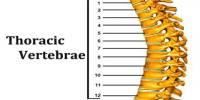Banksia dentata, commonly known as the tropical banksia, is a species of tree in the genus Banksia. It occurs across northern Australia, southern New Guinea, and the Aru Islands. Growing as a gnarled tree to 7 m (23 ft) high, it has large green leaves up to 22 cm (8.7 in) long with dentate (toothed) margins. The cylindrical yellow inflorescences (flower spikes), up to 13 cm (5 in) high, appear over the cooler months, attracting various species of honeyeaters, sunbirds, the sugar glider, and a variety of insects. Flowers fall off the ageing spikes, which swell and develop follicles containing up to two viable seeds each.
Banksia dentata is one of four Banksia species collected by Sir Joseph Banks in 1770, and one of the four species published in 1782 as part of Carolus Linnaeus the Younger’s original description of Banksia. Within the genus, it is classified in the series Salicinae, a group of species from Australia’s eastern states. Genetic studies show it is a basal member (early offshoot) within the group. Banksia dentata is found in tropical grassland known as savanna, associated with Pandanus and Melaleuca. It regenerates from bushfire by regrowing from its woody base, known as a lignotuber.
The tropical banksia is generally a small tree that grows to around 4 m (13 ft) or sometimes 7 m (23 ft) tall, with a rough stocky trunk, spreading crown, and crooked branches. The dark grey bark is not flaky but tessellated in texture and appearance. Initially covered in reddish hair that wears away, branchlets become smooth and grey with age. The large green leaves are scattered along the stems, and more crowded at the branchlet tips. They are 9–22 cm (3.5–8.7 in) long and 2–9 cm (0.8–3.5 in) wide, obovate in shape with mucronate tips. The dentate (toothed) margins are lined irregularly with 0.1–1.3 cm (0.04–0.5 in) long teeth, separated by u-shaped sinuses. The leaves are undulate (wavy) with white undersurfaces, the midrib raised underneath and depressed above. The cylindrical yellow inflorescences (flower spikes) arise from one- to three-year-old branches. Appearing between November and May, they are 10 to 13 cm (4–5 in) high and 5 to 10 cm (2–4 in) wide. Newly opened flower spikes smell like corn. All flower parts are pale yellow; the perianth is 2.5–3.2 cm (1.0–1.3 in) long, including a 0.5 cm (0.2 in) long limb. After anthesis, the pistil is 3.1–4.6 cm (1.2–1.8 in) long. Flower parts soon fall off ageing spikes, which develop into irregular-cylindrical infructescences. The oval follicles are 1.5–2 cm (0.6–0.8 in) long, 0.4–0.8 cm (0.2–0.3 in) high and 0.5–0.8 cm (0.2–0.3 in) wide. Pale green and furry when young, they become smooth and pale brown with age. The follicles open spontaneously with maturity. They contain two seeds each, between which lies a woody dark brown separator of similar shape to the seeds. Measuring 1.8–2.1 cm (0.7–0.8 in) in length, the seed is obovate, and composed of a dark brown 1.1–1.4 cm (0.4–0.6 in) wide membranous ‘wing’ and obovate seed proper which measures 1.0–1.2 cm (0.4–0.5 in) long by 0.5–0.8 cm (0.2–0.3 in) wide. The seed surface can be smooth or covered in tiny ridges.
The bright green cotyledons are obovate, measuring 1.6–1.9 cm (0.6–0.7 in) long by 0.8–1.1 cm (0.3–0.4 in) wide. At the base of each are two pointed auricles around 1.5 mm long. The cotyledons arise from a 3–4 mm high smooth hypocotyl that is 1–1.5 mm in diameter. The subsequent seedling leaves are opposite initially, arising 3–4 mm above the cotyledons. Each is roughly linear in shape, measuring 2.5–2.7 cm (1.0–1.1 in) long and 0.4–0.5 cm (0.2 in) wide, with two to three serrations (“teeth”) on the upper quarter to third of the leaf margin’s length. The leaf undersurface is covered with white hair. Successive leaves become more obovate and are 3–7 cm (1.2–2.8 in) long and 0.8–1.2 cm (0.3–0.5 in) wide, with dentate margins and mucronate tips. Seedling stems are hairy.
















